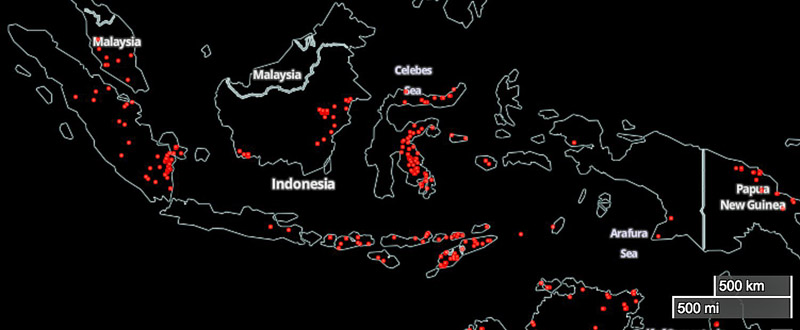The 2015 fire statistics are in for Alberta.
To see a much larger version of the image, click on this 1.2 MB .pdf file.
News and opinion about wildland fire
The 2015 fire statistics are in for Alberta.
To see a much larger version of the image, click on this 1.2 MB .pdf file.
Australians are experimenting with a device that uses compressed air to blast a fire with water mist. Apparently the combination of the air blast and water can slow down the spread of a wildfire.
The Predictive Services section at the National Interagency Fire Center issued their Wildland Fire Potential Outlook through February, 2016. The data represents the cumulative forecasts of the ten Geographic Area Predictive Services Units and the National Predictive Services Unit.
If their forecasts are accurate, it looks like pretty benign conditions across the United States this winter except for southern California in November.
Here are the highlights from their outlook.
November
December
January-February, 2016
Deceased man found in vegetation fire
Firefighters found the body of a 90-year-old man in a brushfire on November 3 near Bainbridge, Ohio. Preliminary indications are that Melvin B. Elliott was raking leaves during the early stages of the fire, but the cause of death has not been determined.
California city bans drones during emergencies
The city council of Poway, California passed a new ordinance this week that prohibits launching, operating or landing drones in any part of the city where an emergency has been declared. The objective is to eliminate conflicts between unmanned aerial vehicles and helicopters or fixed wing aircraft responding to the incident. Several times this year hobby drones flown near wildfires have required firefighting helicopters and air tankers to be grounded for safety reasons.
Efforts to wrest control of federal lands can’t be ignored
The movement to grab federal lands, such as national forests, BLM land, and national parks, and turn it over to states or private landowners can’t be ignored. The efforts are real and are not going away. At least 37 land transfer bills have been introduced in state legislatures with six of them passing; another four have been finalized as “study” legislation.
Below is an excerpt from an article in Wyofile written by Angus M. Thuermer Jr., in which the view is expressed that one of the tactics is to starve federal agencies by reducing their funding, then accuse them of mismanagement, and arguing that states, individuals, or large companies would be better land managers.
[The views of Whit Fosburgh, president and CEO of the Theodore Roosevelt Conservation Partnership] illuminate the seriousness with which some in the conservation community are now viewing the renewed Sagebrush Rebellion. The movement is supported by a strategy that’s decades old — starving land management agencies — transfer critics say. Launched under the guise of deficit reduction and fiscal responsibility, budget cutting is also a cynical ploy to sow dissatisfaction of federal western land management at the grassroots level, Fosburgh contends.

The map shows heat from wildfires detected by the MODIS satellite over Indonesia on November 5, 2015.
Yesterday we wrote about the United States sending some fire equipment to Indonesia, where massive wildfires are burning across the 3,100-mile length of the country creating very serious air quality issues. Visibility in some cities has been reduced to about 100 feet.

On November 2 more than 21 metric tons of wildland firefighting equipment arrived in Indonesia from the United States to assist firefighters who are dealing with what has been described as “almost certainly the greatest environmental disaster of the 21st century”. Massive wildfires are burning across the 3,100-mile length of the country creating very serious air quality issues. Visibility in some cities has been reduced to about 100 feet. Children are being prepared to be evacuated in warships, deaths have been blamed on the smoke, and in Riau as of September 4 officials reported over 10,133 cases of respiratory infection.
Producers of palm oil in Indonesia frequently set fires to clear land, but the weather effects of El Niño have made the situation far worse than normal, with one estimate that the fires are producing more daily emissions than the entire US economy.
The contributions from the United States to help mitigate this disaster have amounted to four technical experts and 5,000 sets of gloves, shirts, jeans, hand tools, and safety goggles. The shipment, organized by USAID’s Office of U.S. Foreign Disaster Assistance, was described by the U.S. Forest Service as “the largest US international fire supply support ever”.
The USFS put the order together for USAID at their fire cache in Redding, California. It was then transported to Indonesia on a Korean Air aircraft.


